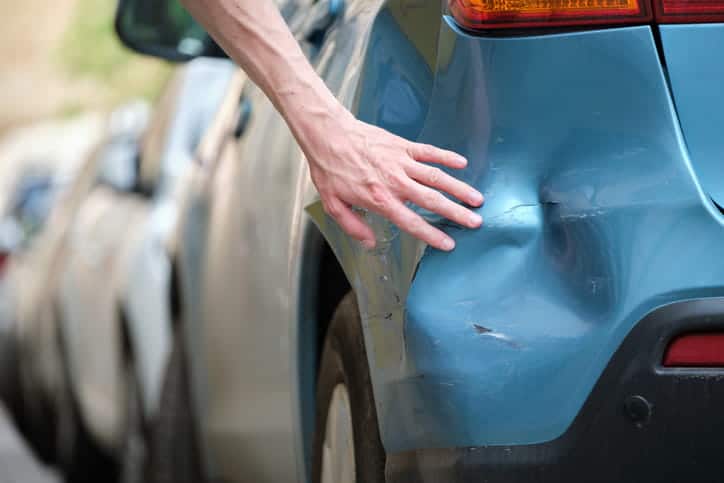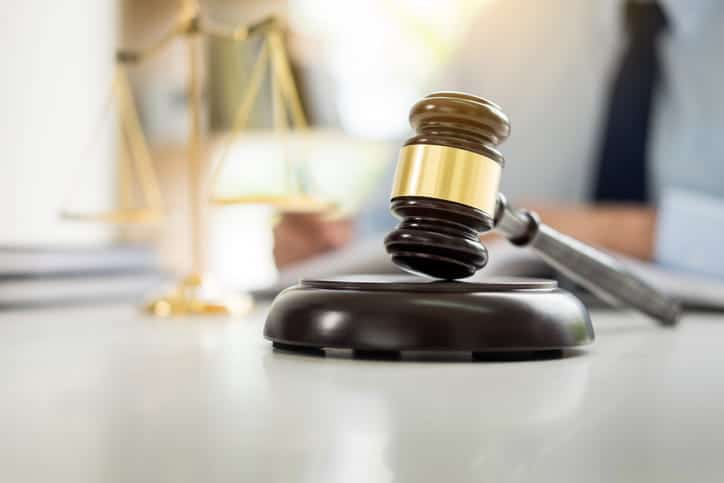Can I Sue a Hit-and-Run Driver?
If you’ve been injured in a car accident in Tampa, Florida, or the surrounding area, you know how overwhelming it can be to navigate the aftermath. If your injury was the result of a hit-and-run accident, the frustration can be compounded.

Knowing you do not have to navigate the road to recovery alone is important. At the law offices of Jack Bernstein, our personal injury attorneys will provide you with the legal guidance you need following a hit-and-run. We don’t take a fee until we win, and we’ll work diligently on your case so you can recover the justice you deserve.
Schedule your free case evaluation today when you contact the team at Jack Bernstein, Injury Attorneys.
How Common Are Hit-and-Run Accidents?
Unfortunately, hit-and-run accidents are all too common in Florida. In 2023, the state saw a recorded 104,273 hit-and-run crashes. Of those accidents, 271 victims lost their lives.
According to the latest data from the Florida Highway Safety and Motor Vehicles (FHSMV) database, about 30% of all car crashes in the Tampa area are considered hit-and-run accidents (roughly 6,500).
Other alarming hit-and-run statistics from 2023 include:
- Hit-and-run crashes in Florida resulted in 271 fatalities and 871 serious bodily injuries
- Of the 271 hit-and-run fatalities, 159 were pedestrians, and 47 were bicyclists
- Of Florida’s 104,273 hit-and-run crashes last year, 86,987 involved property damage only
- Over 81% of hit-and-run fatalities occurred during dawn, dusk, or during the nighttime
The busy landscape of the Tampa Metro area, along with its thriving tourist scene and busy nightlife, make this city one of the most dangerous to drive in.
Common reasons for accidents in Tampa include drivers speeding, driving too fast for the road or weather conditions, tailgating, reckless driving, distracted driving, tired or fatigued driving, and other unsafe driving habits.
Reasons People Leave the Scene of an Accident
No matter the circumstances, you should never leave the scene of a hit-and-run accident. Under Florida law, leaving the scene of an accident is a crime. It can be charged as a second-degree misdemeanor when there is property damage and a second — or third-degree felony when a victim is injured.
Despite Florida’s laws on leaving the scene of a car crime, drivers leave the scene of hit-and-run accidents for all types of reasons. Common reasons a driver might flee include:
- Fear they are going to get in trouble, even if the hit-and-run was an accident
- The driver is drunk or driving impaired
- The driver has a warrant out for their arrest
- The driver’s vehicle insurance, registration, or licensure is not up to date
If you have been the victim of a hit-and-run accident, you may be able to pursue damages from the hit-and-run driver. However, filing a lawsuit is not always cut and dry. You’ll need to be able to do the following to pursue a claim:
You Must Be Able To Identify Them
You cannot pursue damages against someone if you do not know who injured you. When a hit-and-run driver flees the scene, it can be difficult to identify them. Fortunately, in today’s day and age, with a bit of detective work, you may be able to track down the driver. The following are ways you can identify a hit-and-run driver.
- Take down any identifying information about the car, including a description or license plate number
- Call the police after a hit-and-run accident. When officers arrive, they will write a police report about what happened. They will also collect important information like witness statements and evidence — all information that can help you track down a driver.
- Ask local businesses or residential owners for any available footage of the accident
It’s important to note that you should never pursue a driver after a hit-and-run accident. Doing so can put you and others at risk and could result in charges against you.
Leaving the Scene Is Not Proof of Fault
Contrary to popular belief, leaving the scene of a hit-and-run accident is not proof of fault. In fact, some drivers may genuinely not have known they have hit someone or something. This often happens in cases of property damage.
For example, some drivers may drive off after unknowingly sideswiping a vehicle or backing into a bumper. Although they have hit something and driven off, they may not know they were involved in an actual hit-and-run.
What Damages Can I Seek in a Hit-and-Run?
If you do pursue legal action against a hit-and-run driver, you can seek both compensatory and punitive damages against them.
Compensatory damages are designed to compensate victims for their losses following a hit-and-run. Compensatory damages include economic (calculable losses) and non-economic (non-calculable losses). Common examples of compensatory damages include:
- Cost of hospital bills, medical expenses, and treatment costs
- Loss of income or lost wages
- Property loss
- Loss of enjoyment of life
- Mental and emotional trauma
- Scarring or disfigurement
Although rare, you may also be able to pursue punitive damages. Punitive damages refer to the monetary sum a defendant is required to pay. Unlike compensatory damages, punitive damages are designed to punish defendants for their actions rather than compensate victims for their losses.
Punitive damages are often levied against individuals or entities whose actions were especially egregious.
Who Covers My Damages After a Hit-and-Run Accident if I Can’t Identify the At-Fault Driver?
In the event you are unable to identify the hit-and-run driver, you may still be able to pursue damages from your car insurance company or your health insurance company.
Your Car Insurance Company
Florida’s automotive laws require all drivers to carry personal injury protection (PIP) insurance. This insurance kicks in to provide you with $10,000 of medical coverage that will cover the cost of any medical bills incurred, regardless of who was at fault.
Uninsured and Underinsured Coverage
If you carry this optional automotive insurance, it will kick in to provide you with additional coverage for you and any other passengers in your vehicle. Generally, this insurance will cover you if you are hit by someone with no bodily insurance or not enough insurance, but it also applies to hit-and-run accidents as well.
Your Health Insurance Company
In some cases, you may be able to turn to your health insurance company to cover some of the costs your personal injury protection does not cover. This will help alleviate the burden of out-of-pocket expenses. If a driver is later identified, your health insurance company could go after the insurance driver to recover those expenses through a process known as subrogation.
Speak With a Personal Injury Lawyer

If you have been injured in a hit-and-run accident, let Jack Bernstein, Injury Attorneys, help you recover the compensation you may be entitled to.
Our Tampa hit-and-run accident attorneys have a thorough understanding of Florida’s auto insurance laws and can help you understand your legal rights and options.
Contact us today to schedule your free case evaluation.
Sources:
Florida Highway Safety and Motor Vehicles.
Parseghian, A. (2024). ‘Disturbing trend’: Florida sees another year with more than 100K hit-and-run crashes.
